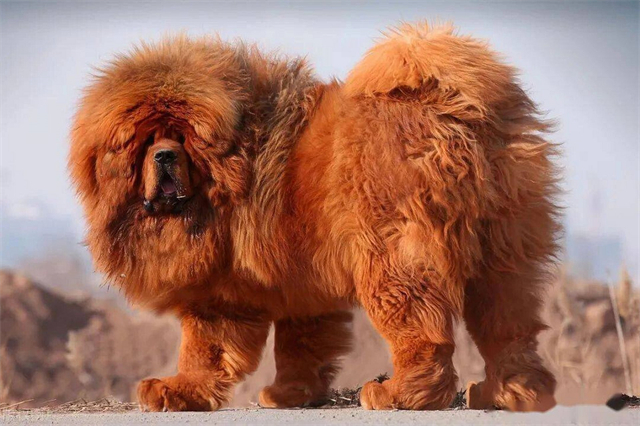The Tibetan Mastiff, a breed steeped in legend and history, is renowned for its imposing presence and unwavering loyalty. Originating from the Himalayan regions of Tibet, Nepal, and China, this majestic dog has served as a protector of livestock, monasteries, and families for centuries.
 Article source:https://www.petwoah.com/pet Site-https://www.petwoah.com/576.html
Article source:https://www.petwoah.com/pet Site-https://www.petwoah.com/576.html
With its thick double coat, deep bark, and calm yet alert demeanor, the Tibetan Mastiff embodies both power and grace. Today, this breed continues to captivate dog enthusiasts worldwide, blending ancient heritage with modern companionship.Article source:https://www.petwoah.com/Pet Site-https://www.petwoah.com/576.html
1. Historical Significance of the Tibetan Mastiff
The Tibetan Mastiff’s roots trace back over 5,000 years, making it one of the oldest dog breeds. Nomadic tribes in Tibet relied on these dogs to guard flocks from predators like wolves and snow leopards.Article source:https://www.petwoah.com/Pet Site-https://www.petwoah.com/576.html
Their intimidating size and fearless nature also made them symbols of status among Tibetan nobility. Historical records, including writings by Aristotle and Marco Polo, mention the Tibetan Mastiff as a prized guardian, highlighting its enduring legacy.Article source:https://www.petwoah.com/Pet Site-https://www.petwoah.com/576.html
2. Physical and Temperamental Traits
Appearance:Article source:https://www.petwoah.com/Pet Site-https://www.petwoah.com/576.html
The Tibetan Mastiff is instantly recognizable due to its lion-like mane, muscular build, and dense coat. Males can weigh up to 150 pounds, with coats ranging from black, brown, and gold to rare blue-gray hues. Their expressive eyes and curled tail add to their regal aura.Article source:https://www.petwoah.com/Pet Site-https://www.petwoah.com/576.html
Personality:Article source:https://www.petwoah.com/Pet Site-https://www.petwoah.com/576.html
Despite their formidable appearance, Tibetan Mastiffs are known for their calm and independent nature. They form strong bonds with their families but remain aloof with strangers, a trait honed through centuries of guarding. Early socialization is crucial to ensure they adapt well to diverse environments.Article source:https://www.petwoah.com/Pet Site-https://www.petwoah.com/576.html
3. Caring for a Tibetan Mastiff
Exercise Needs:Article source:https://www.petwoah.com/Pet Site-https://www.petwoah.com/576.html
While not overly active, the Tibetan Mastiff requires daily walks and mental stimulation. A secure yard is ideal, as their protective instincts may lead them to patrol their territory.Article source:https://www.petwoah.com/Pet Site-https://www.petwoah.com/576.html
Grooming:
Their thick coat demands weekly brushing to prevent matting, especially during shedding seasons. Regular nail trimming and ear cleaning are also essential.
Diet and Health:
A high-protein diet supports their large frame. Common health concerns include hip dysplasia and thyroid issues, so routine vet checkups are vital. With proper care, a Tibetan Mastiff can live 10–14 years.
4. Why Choose a Tibetan Mastiff?
This breed suits experienced owners who value loyalty and a natural guardian. The Tibetan Mastiff thrives in homes with space and a structured routine. While not suited for apartment living, they excel in rural or suburban settings where their protective instincts can shine.
5. Preserving the Legacy of the Tibetan Mastiff
Efforts to maintain the breed’s purity are ongoing, with kennel clubs worldwide recognizing its unique standards. Responsible breeding practices ensure the Tibetan Mastiff retains its historic traits while adapting to contemporary roles as a companion and watchdog.
The Tibetan Mastiff remains a living testament to resilience and loyalty. Whether as a working dog or a devoted family member, this breed’s blend of strength and serenity continues to inspire admiration. For those willing to meet its needs, the Tibetan Mastiff offers a lifelong bond rooted in ancient tradition and unwavering devotion.

